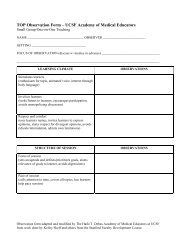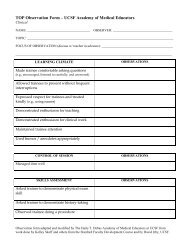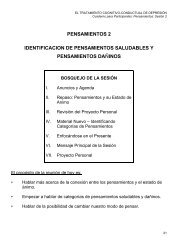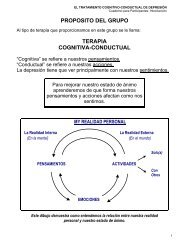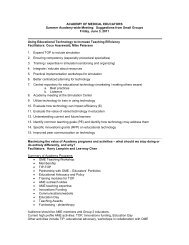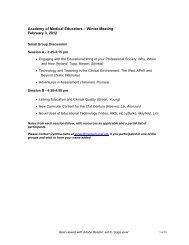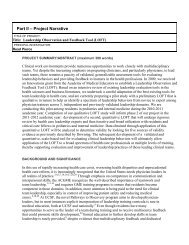The Healthy Management of Reality - Stanford University
The Healthy Management of Reality - Stanford University
The Healthy Management of Reality - Stanford University
Create successful ePaper yourself
Turn your PDF publications into a flip-book with our unique Google optimized e-Paper software.
important to practice the presence <strong>of</strong> his God. I feel I cannot teach others topractice the presence <strong>of</strong> a particular God or other religious concept. I do not knowhow to pick one among all the ones I have become acquainted with, much lessthose I have not yet learned about. But I can call forth each person's tendency toseek the good. I can activate my own tendency to do so. And I can purposefullyattempt to join the two (or the many) and use the joint energy generated by thisconscious effort to increase movement in a healthy direction.I can point out that the good is not only a concept. It has a reality that can befelt. We know when we have been in the presence <strong>of</strong> someone who was acting out<strong>of</strong> good motives, and when we have been devalued or manipulated with maliciousintent. Is there any doubt that the former is preferable? We know that we wouldmuch rather live in a reality in which others acted out <strong>of</strong> noble motives, rather thanout <strong>of</strong> meanness or pettiness. We know that our actions can contribute to either <strong>of</strong>these realities. And one way to increase the probabilities that we will help build agood reality is to practice the presence <strong>of</strong> good.Practicing the presence <strong>of</strong> good begins with setting up cues within both one'sinternal reality and external reality that help focus our attention on the reality <strong>of</strong>goodness itself. For example, before or during an interaction with someone, wecan ask ourselves how to make this interaction produce goodness for both <strong>of</strong> us.<strong>The</strong> internal reminder to focus on how our conversation can lead to a good end willusually translate into external actions (facial expressions, hand gestures, tone <strong>of</strong>voice) which will actually make the interaction more constructive on our part.Most <strong>of</strong> the time, the other person will respond to the tone we set: if we arebelligerent, we will stimulate belligerence, fear, or disdain; if we are friendly andnonthreatening, most <strong>of</strong> the time we will be treated similarly. <strong>The</strong> result will be agreater feeling <strong>of</strong> working together and a greater likelihood <strong>of</strong> obtaining more <strong>of</strong>HMOR.July2005.Muñoz.doc 99



